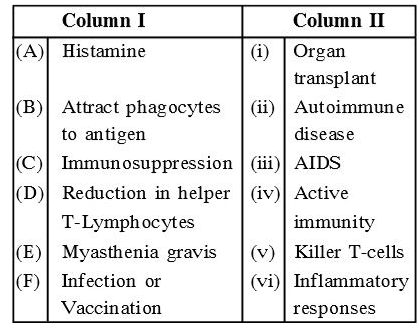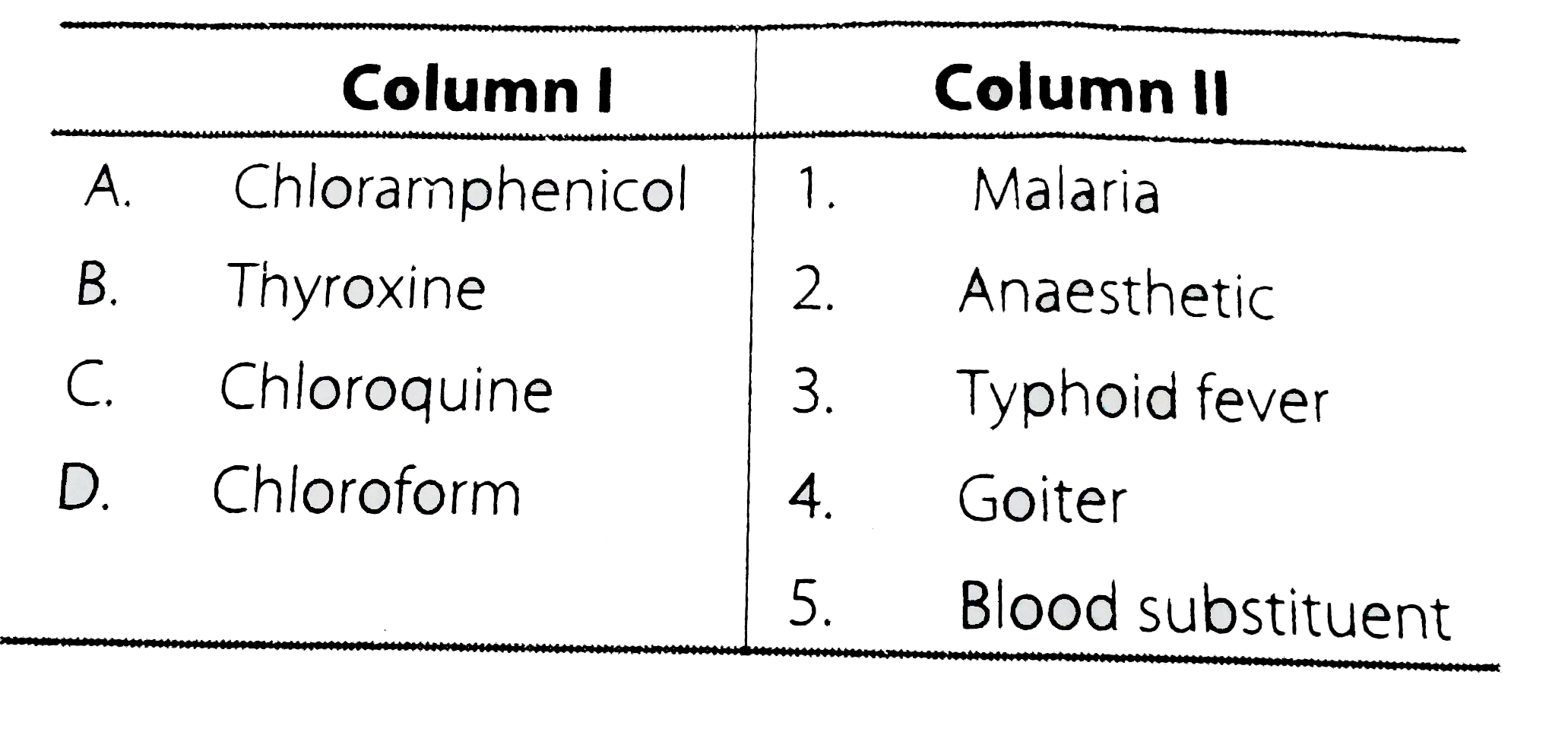Match the pollution(s) in column I with the effect(s) in column II.

Video Solution
Text Solution
The correct Answer is:A. →(4) , B. →(5) , C. →(1) , D. →(3) , (E) →(2)
A. Low concentration of sulphur dioxide causes respiratory disease e.g., asthma, bronchitis etc.
B. The irritant red haze in the traffic and congested place is due to oxides of nitrogen.
C. The increased amount of CO2 in air is mainly responsible for globel warming.
D. Excess nitrate in drinking water cause methemoglobinemia (blue baby syndrome).
E. Lead can damage kidney,liver reprodutive system etc.
|
Updated on:21/07/2023
Topper's Solved these Questions
- BOOK - NCERT EXEMPLARCHAPTER - ENVIRONMENTAL CHEMISTRYEXERCISE - Assertion And Reason7videos
ENVIRONMENTAL CHEMISTRY
- BOOK - NCERT EXEMPLARCHAPTER - ENVIRONMENTAL CHEMISTRYEXERCISE - Long Answer Type5videos
ENVIRONMENTAL CHEMISTRY
- BOOK - NCERT EXEMPLARCHAPTER - ENVIRONMENTAL CHEMISTRYEXERCISE - Short Answer Type18videos
ENVIRONMENTAL CHEMISTRY
- BOOK - NCERT EXEMPLARCHAPTER - CLASSIFICATION OF ELEMENTS AND PERIODICITY IN PROPERTIES.EXERCISE - Long answer types question7videos
CLASSIFICATION OF ELEMENTS AND PERIODICITY IN PROPERTIES.
- BOOK - NCERT EXEMPLARCHAPTER - HYDROCARBONSEXERCISE - Long Answer Type Questions4videos
HYDROCARBONS
Similar Questions
Knowledge Check
- Question 1 - Select One
Match the column i with column II.
 AA-q,B-r, C-s,D-pBA-p, B-q, C-r, D-sCA-r, B-q, C-p, D-sDA-r, B-p, C-q, D-s
AA-q,B-r, C-s,D-pBA-p, B-q, C-r, D-sCA-r, B-q, C-p, D-sDA-r, B-p, C-q, D-s - Question 2 - Select One
Match the column I with column II.
 AÂ A - q, B - r, C - s, D - pBA - p, B - q, C- r, D - sCÂ A r, B - s, C - p, D- qDA -s, B - p, C-q, D - r
AÂ A - q, B - r, C - s, D - pBA - p, B - q, C- r, D - sCÂ A r, B - s, C - p, D- qDA -s, B - p, C-q, D - r - Question 3 - Select One
Match the column I with column II.
 AA(i) B(iii) C(ii) D(iv) E(v) F(vi)BA(iii) B(ii) C(iv) D(i) E(vi) F(v)CA(vi) B(iv) C(ii) D(iii) E(v) F(i)DA(vi) B(iv) C(iii) D(ii) E(v) F(i)
AA(i) B(iii) C(ii) D(iv) E(v) F(vi)BA(iii) B(ii) C(iv) D(i) E(vi) F(v)CA(vi) B(iv) C(ii) D(iii) E(v) F(i)DA(vi) B(iv) C(iii) D(ii) E(v) F(i)
Match the pollutants given in Column I with their effects given in Column II.
 View Solution
View SolutionMatch the compounds given in column I with the effects given in Column II
 View Solution
View SolutionMatch the compounds given in Column I with the effects given in Column II.
 View Solution
View SolutionMatch the compounds given in Column I with the effects given in Column II.
 View Solution
View SolutionMatch the column I and column II.
 View Solution
View Solution


 .
.